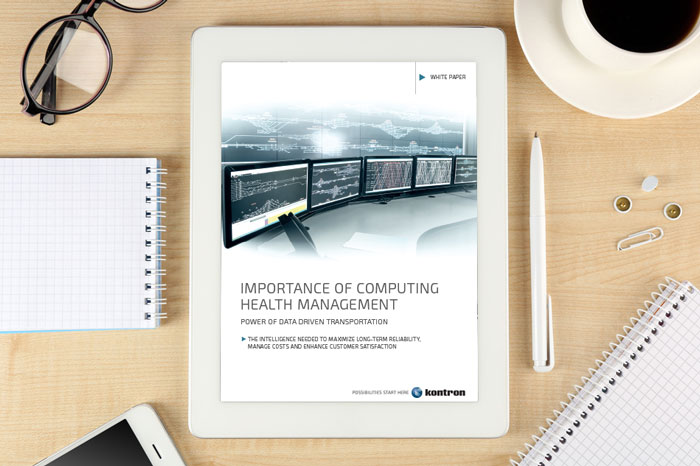Whitepaper: Importance of computing health management
- Like
- Digg
- Del
- Tumblr
- VKontakte
- Buffer
- Love This
- Odnoklassniki
- Meneame
- Blogger
- Amazon
- Yahoo Mail
- Gmail
- AOL
- Newsvine
- HackerNews
- Evernote
- MySpace
- Mail.ru
- Viadeo
- Line
- Comments
- Yummly
- SMS
- Viber
- Telegram
- Subscribe
- Skype
- Facebook Messenger
- Kakao
- LiveJournal
- Yammer
- Edgar
- Fintel
- Mix
- Instapaper
- Copy Link
Posted: 28 June 2016 | Kontron | No comments yet
The intelligence needed to maximize long-term reliability, manage costs and enhance customer satisfaction…
The market for transportation systems is forecasted to continue its rapid expansion according to a report by Transparency Market Research that predicts double-digit growth from 2013 to reach $30.2 billion by 2019.
As the use of transportation systems expands to monitor, control and provide a diverse set of operator and passenger capabilities, OEMs must integrate more advanced computing technologies to keep up with growing expectations and next-generation requirements. But providing the latest technologies is only part of the requirements list for this critical arena; computing platforms must also enable design flexibility and deliver long-term availability and value. That is because railway applications are now required to support broad and varied needs from rolling stock and fleet management to video surveillance, internet for passengers and ticketing or conductor/driver information. In addition, platform reliability must be at the highest level to ensure maximum uptime availability, safety and security and comply with ISO9001, EN50155 and SIL4 standards and possess IRIS and UNIFE certifications.
This shows that railway operations are highly dependent on the status of the computer systems in the field as well as online information that allows real-time access about operational events. Large rolling stock fleets are typically spread over thousands of kilometers of railway operations, which can make remote system status access difficult. A major game-changing innovation that delivers the advanced intelligence needed to cost effectively manage and monitor system operations are new integrated computing platform health management technologies. Health management capabilities provide the resource allowing system operators to go from simply reactive to positively proactive in managing application functionality and uptime. Significant efficiencies and benefits from remote monitoring, fleet availability, serviceability and anticipated maintenance can be achieved now that were not available previously.
This whitepaper is restricted - login or subscribe for free to access
Thank you for visiting our website. To access this content in full, you'll need to login or subscribe.
It's completely free to subscribe, and in less than a minute you can continue reading. If you've already subscribed, just login.
Why subscribe? Join our growing community of thousands of industry professionals and gain access to:
- Quarterly issues in print and/or digital format
- Case studies, whitepapers, webinars and industry-leading content
- Breaking news and features
- Our extensive online archive of thousands of articles and years of past issues
All for free!
Click here to Subscribe today Login here
Related content from this organisation
Related topics
Business Models, Fleet Management & Maintenance, Multimodality, Ticketing & Payments, Transport Governance & Policy
Related organisations
Kontron









